| Neural Networks | |
| << TO BE UPDATED, PLEASE VISIT AGAIN >> | |
| Neural networks are composed by combination of neurons. The common architectures use conventional artificial neurons with aggregating functions or linear synaptic operation. The neuron connections help the network to perform complex behaviors. Artificial neural networks are structured to learn and generalize the knowledge, so the network learns by continuous adjustment of the weights of the connections. Each neuron has its own memory and ability to process information [1]. | |
| Some projects in this field under my supervision are as follows: | |
| Industrial predictive maintenance using neural networks | |
 |
In this
work, an artificial neural
network has been implemented for the predictive
maintenance of an industrial machine, where the input data
that was used has been taken from a vibration test on an
alternating current motor. The data that we obtained from the vibrometer was the frequency and the average of the vibration, which were used as inputs to feed the artificial neural network for the training stage. The output of this unit gave us a value with which we can categorize the severity level of the machine motor, according to the severity table provided by ISO norm. To test the correct functioning of the system, different data recorded from different motors have been used. |
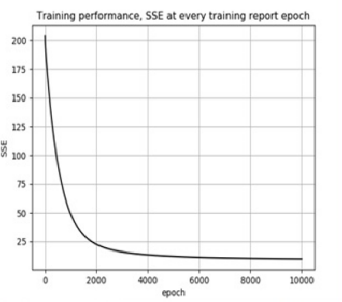 |
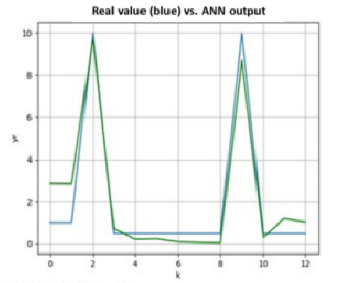 |
|
Bsc. Thesis Student:Laura Rubi Sánchez 133635 [5] |
|
| Prediction of Electrocardiograms via wireless communication | |
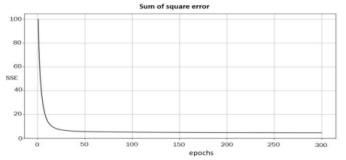 |
In the present project the
implementation of an Artificial
Neural Network has been developed for the
prediction of heartbeats
via wireless, through a
Python programming environment, which was programmed on the
Biomedical Sensor platform
using its ECG input module and wireless output. The objective of this project is to predict a certain prediction horizon, according to the learning rate, the number of backward samples that will be used in training and the epochs specified as the learning cycles. The acquisition of the signal (input) came from electrodes, which were placed on the chest surface near the heart. The visualization of the signal was presented through a graphical interface, which was developed in Python. The generated interface was designed to use the desired function by means of two buttons so that the system executes the action (training or prediction) that has been selected. |
 |
|
|
Bsc. Thesis Student:Paola Alejandra Huerta 131546 [6] |
|
| Deep Learning for Industrial Applications | |
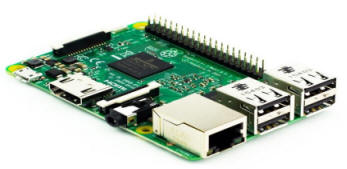  |
The present project seeks to
implement a prototype of sensory
vision system with application to classify images
from a database. The implementation of this work can have a positive impact in different fields of application. Example: new industrial processes or methods; The adequate diagnosis in the field of medical imaging; facial recognition in the field of civil security. Currently, artificial vision systems are a very important part in most of all industrial processes, through the use of computer vision has been able to monitor the production processes and their final products. With this tool the quality and quantity of finished products has been increased. However, artificial vision systems are not completely flexible to be applied in all types of industry, and present greater limitations when exposed to conditions where graphics and noise are outside their parameters. It is not the same to recognize a piece of white color with lots of light, and recognize that same piece where the medium lacks luminosity. The identification of certain characteristics involves some physical and psychological concepts of the human brain. This is where artificial intelligence tools that can supply this extra degree of complexity become necessary. The demands are so high and traditional vision systems are not precise enough to meet those needs. Artificial neural networks are inspired by the understanding in the biology of our brain for the learning process. Deep learning is a tool of artificial intelligence in which nested layers of neural networks are massively seen. Nowadays, the recognition of computer images trained through deep learning is better than that of humans, in some scenarios. |
|
Bsc. Thesis Student:Juan Manuel Ramos 109909 [7] |
|
| References: | |
| [1] Rodriguez-Jorge, Ricardo, Huerta-Solis, Paola, Bila, Jiri and Skvor, Jiri, Adaptive analysis of electrocardiogram prediction using a dynamic cubic neural unit, Advanced Information Networking and Applications-Proceedings of the 36th International Conference on Advanced Information Networking and Applications (AINA-2022), Lecture Notes in Networks and Systems, vol. 451, Springer Nature Switzerland AG, Sydney, Australia April 13 - 15, 2022 (Web of Sciences, Core Rank B). | |
| [2] R. Rodriguez-Jorge, I De Leon-Damas, J Bila, J Skvor, Internet of things-assisted architecture for QRS complex detection in real time, Journal of Internet of Things, Vol 14 (2021), pp. 100395, Indexed in JCR, Impact Factor: 5.711, Q1 Elsevier. | |
| [3] Rodriguez-Jorge, R.; Bila, J; Skvor, J., Neural Network with L-M Algorithm for Arrhythmia Disease Classification, The 16th International Conference on P2P, Parallel, Grid, Cloud and Internet Computing, Lecture Notes in Networks and Systems, 2021,Springer, Cham. (Web of Science, Proceedings Citation Index). | |
| [4] R. Rodrguez-Jorge and J. Bila, Cardiac Arrhythmia Prediction by Adaptive Analysis via Bluetooth, MENDEL, Vol. 26, No. 2, pp. 29-38. DOI: https://doi.org/10.13164/mendel.2020.2.029. Indexed in Scopus. | |
| [5] Rodriguez Jorge, R. (2017). Artificial neural networks: Challenges in science and engineering applications. In Frontiers in Artificial Intelligence and Applications (Vol. 295, pp. 25–35). IOS Press. https://doi.org/10.3233/978-1-61499-773-3-25 | |
| [6] Rodriguez-Jorge, R., Bila, J., Mizera-Pietraszko, J., & Martínez-Garcia, E. A. (2019). Weight adaptation stability of linear and higher-order neural units for prediction applications. In Advances in Intelligent Systems and Computing(Vol. 833, pp. 503–511). Springer Verlag. https://doi.org/10.1007/978-3-319-98678-4_50 | |
| [7] Rodríguez, R., Mexicano, A., Bila, J., Cervantes, S., & Ponce, R. (2015). Feature extraction of electrocardiogram signals by applying adaptive threshold and principal component analysis. Journal of Applied Research and Technology, 13(2), 261–269. https://doi.org/10.1016/j.jart.2015.06.008 | |
| [8] Bachelor thesis: “Detection of QRS complexity in real time through Bluetooth communication,” by the student Isaac De Leon Damas, to get the title of Engineer in Mechatronics. Mechatronics Program. Autonomous University of Ciudad Juárez. Dec. 2018. (Advisor: Dr. Ricardo Rodriguez Jorge). | |
| [9] Bachelor thesis: “Predictive maintenance of an industrial machine using neural networks,” by the student Laura Rubí Sánchez Pérez, to get the title of Engineer in Mechatronics. Mechatronics Program. Autonomous University of Ciudad Juárez. Dec. 2018.(Advisor: Dr. Ricardo Rodriguez Jorge). | |
| [10] Bachelor thesis: “Implementation of a cubic neuronal unit for the detection of patterns and prediction of cardiac arrhythmias via wireless,” by the student Paola Alejandra Huerta Solis, to get the title of Engineer in Mechatronics. Mechatronics Program. Autonomous University of Ciudad Juárez. Dec. 2018. (Advisor: Dr. Ricardo Rodriguez Jorge). | |
| [11] Bachelor thesis: “Implementation of an image classifier using a multilayer network with feed forward,” by the student Juan Manuel Ramos Gaspar, to get the title of Engineer in Mechatronics. Mechatronics Program. Autonomous University of Ciudad Juárez. Dec. 2018. (Advisor: Dr. Ricardo Rodriguez Jorge). | |
| [12] R. Rodrguez-Jorge and J. Bila, Cardiac Arrhythmia Prediction by Adaptive Analysis via Bluetooth, MENDEL, Vol. 26, No. 2, pp. 29-38. Dec. 2020. DOI: https://doi.org/10.13164/mendel.2020.2.029. Indexed in Scopus. | |
| [13] Cuong Nguyen Cong, Ricardo Rodriguez-Jorge, Nghien Nguyen Ba, Chuong Trinh Trong, Nghia Nguyen An, Design of Optimal PI Controllers using the Chemical Reaction Optimization Algorithm for Indirect Power Control of a DFIG model with MPPT, In: Web, Artificial Intelligence and Network Applications. WAINA 2020. Advances in Intelligent Systems and Computing, vol 1150. Springer, Cham (Web of Science, Core Rank B). April 2020. | |
| [14] Rodríguez-Jorge, R.; Sánchez-Pérez, L.; Bíla, J.; Škvor, J., Adaptive architecture for fault diagnosis of rotating machinery, Advanced Informaton Networking and Applicatons, Vol 3, 2021. Springer, Cham (Web of Sciences, Core Rank B). | |
 |
Research Group |
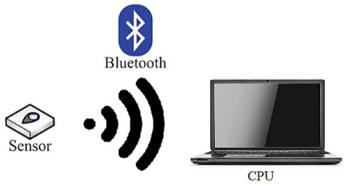 |
|
Mechatronics, Signal Processing, Control and Artificial Neural Networks |
||
| Department of
Information and communications technologies Technological Centre Ceit /“Researching Today, Creating the Future” |
||